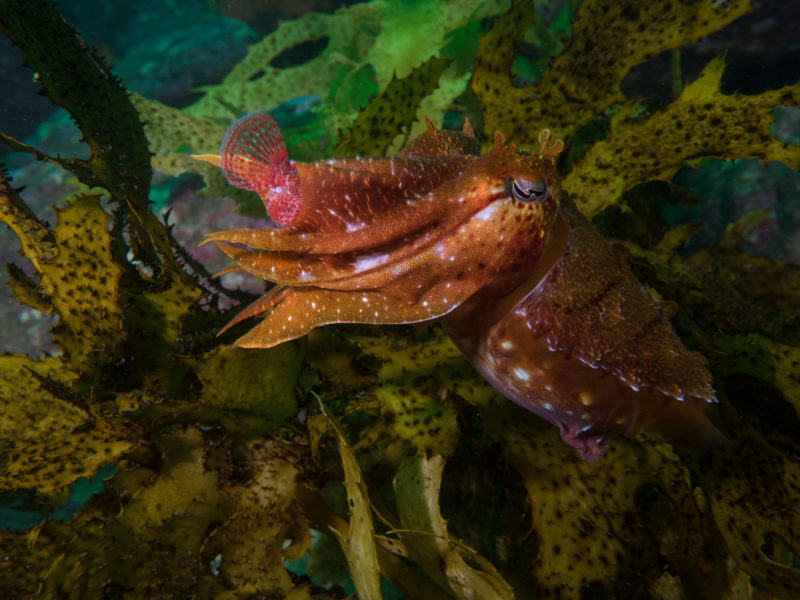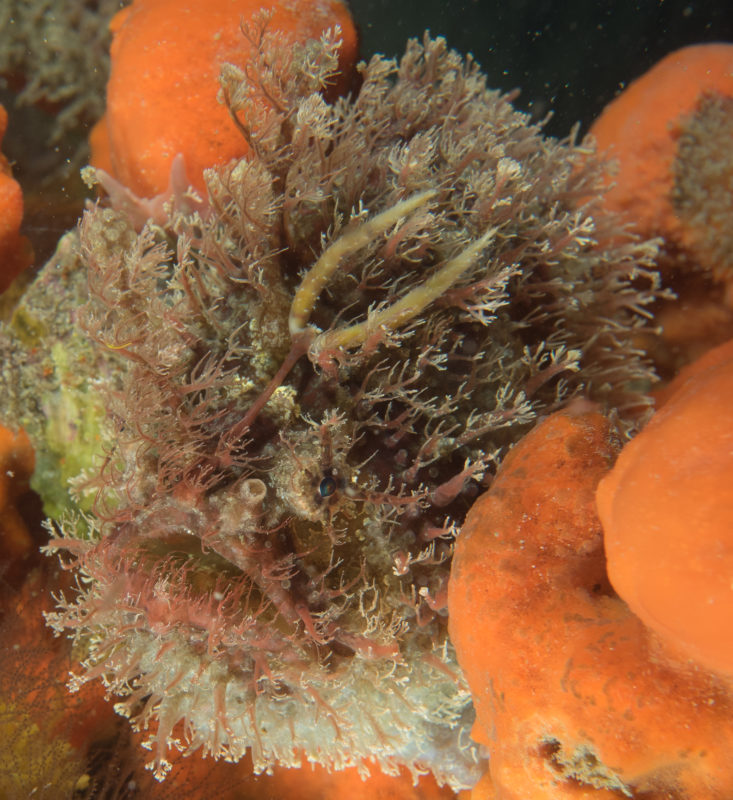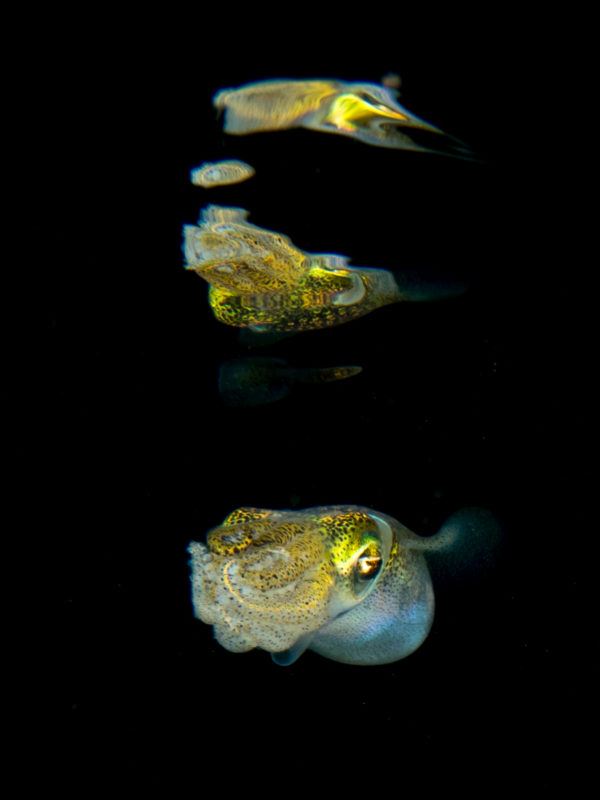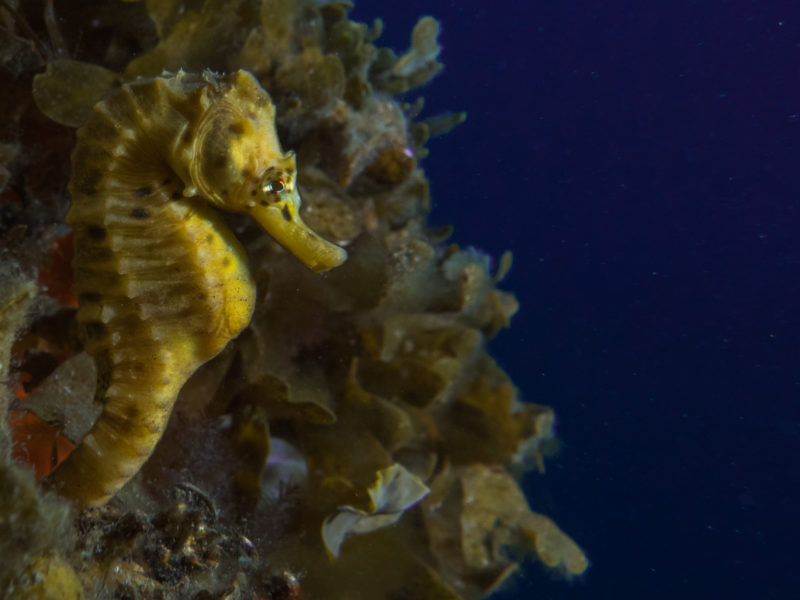Has a dive buddy ever tried to grab your attention and point at a rock or bit of stray seaweed with extreme enthusiasm, only for you to stare blankly at nothing? After emerging from the dive the first thing they usually say is “did you see that?!” Many of our favorite underwater critters have excellent camouflage for hunting or hiding, or both. Knowing where and how to look can increase your chances of spotting one of these shy animals. Here are our picks for the top five hardest to spot marine creatures.
 Cuttlefish
Cuttlefish
These mysterious looking cephalopods use their color-changing abilities to blend into the surrounding plants and terrain. Cuttlefish vary widely in size. Giant cuttlefish can be as large as a young child, and so of course are easier to spot, while smaller, more common species are slightly bigger than an orange. To spot these creatures, look for two of their most distinctive features. First, look for the tentacles and arms that are present on the head. While a cuttlefish can change color, it can’t hide these unusual appendages. Second, look for the cylindrical body. Cuttlefish are usually floating and very rarely sit on the seafloor. A strange, cylindrical blob floating near the bottom is often a cuttlefish hiding among the terrain.
Anglerfish
Divers often see this type of frogfish walking along the ocean floor. While they can swim (not well), they prefer to clamber around in search of prey. These fish hunt by waiting for unsuspecting animals to pass by, so they need exceptional camouflage. With tiny eyes and multiple small appendages hanging off their bodies it can be tricky to find them. One body feature does give them away, however. Their front fins, which function as feet, allow them to walk along the bottom of the sea floor. They resemble duck’s webbed feet, and are an excellent feature to look for if you want to spot an anglerfish.
Bobtail squid
Another cephalopod, these tiny squid have a beautiful metallic shimmer that you can spot from far away. Unfortunately for divers, these golf-ball-sized animals live most of their lives just below the sandy seafloor. Using their arms, they scoop sand over their bodies until only two shiny eyes peep out. These eyes look much like broken pieces of shell, glimmering on the seafloor, so look for two identical pieces of broken shell within an inch or so of each other. Once you’ve found one, stay and watch. Once they come out to feed, they will dazzle you.
Rock cod and stonefish
These fish often have skin patterns like camouflage wetsuits. They are usually the size of a football and are covered in various shades of brown, which they use to easily blend into the rocky surface of the ocean floor. Often divers can be inches away from these amazing fish and never notice them laying in a crevice of a nearby rock. Look for large circular eyes and bulbous heads; it’s the head that divers will spot first. Their eyes also become obvious once you learn what to look for, and no matter where you swim, the eyes always seem to be staring straight at you.
Seahorses
These amazing fish grab onto structures like seaweed or fans with their amazing tails. You can find them in some unusual shallow locations, such as near or under piers, and snorkelers can enjoy having a look as well. The key to spotting them is to look for unusual straight shapes, which is the line made from their tail to their head. This geometry tends to be uncommon in sponge gardens or kelp beds. Movement is another way of finding a seahorse, as they will often slowly move around with the ocean currents or surge. If there are ocean-swimming nets nearby, you can often find them in the middle of the squares formed by the intertwining ropes.






